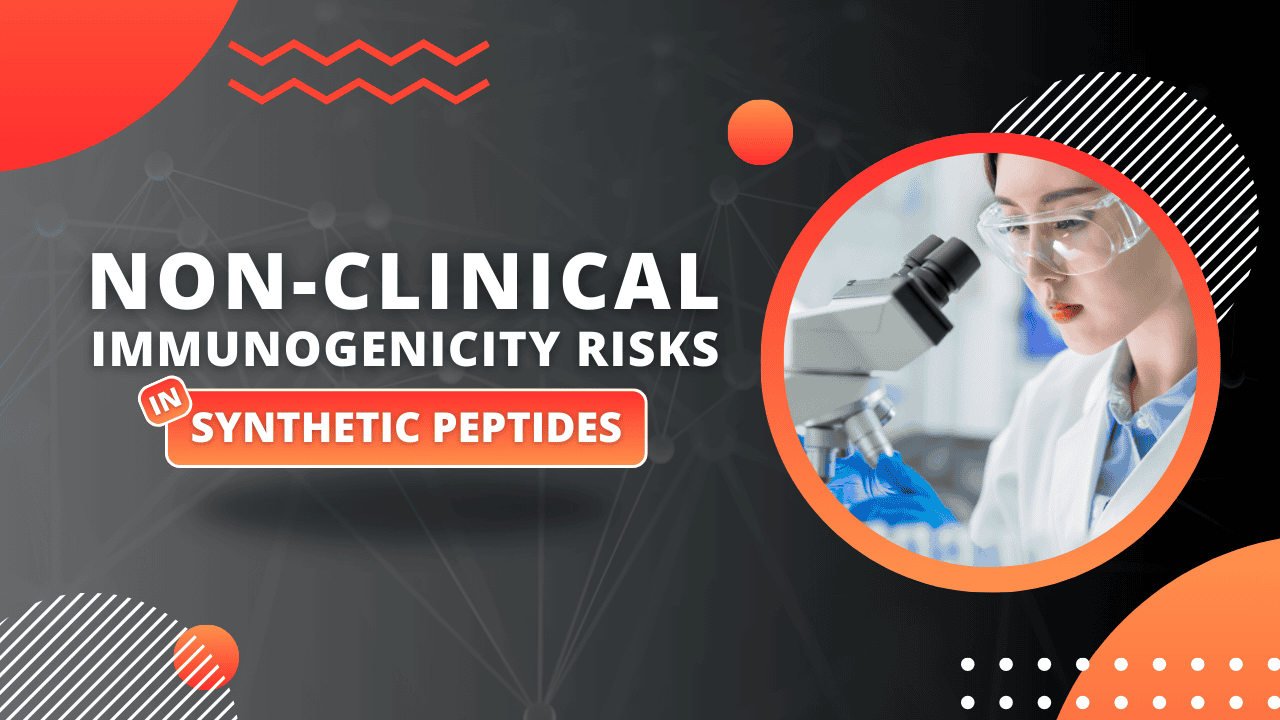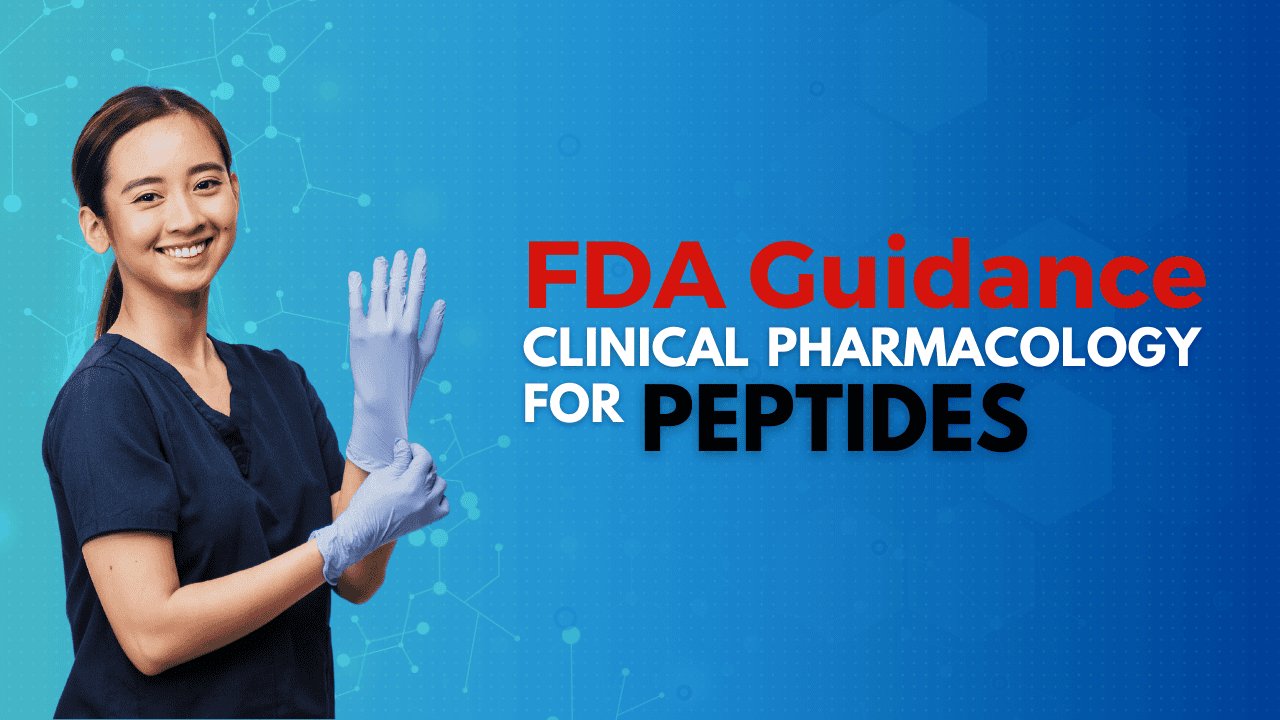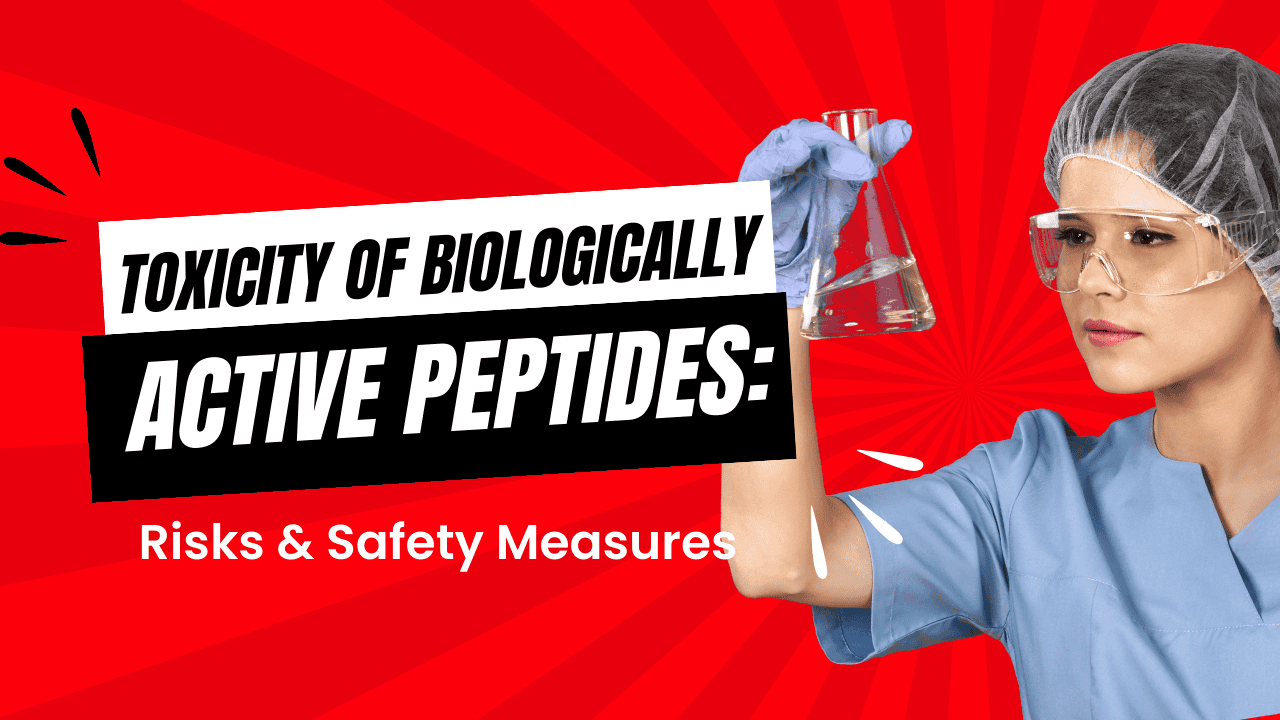

Ever wondered how peptide drugs, those tiny chains of amino acids, are regulated for safety?
This article delves deep into all you need to know about peptide safety regulations, from understanding peptides to the nitty-gritty of regulatory toxicology.
It’s a comprehensive guide meant for anyone curious about the rigorous safety measures that make these therapeutic peptides both safe and effective.
Stick around, and you’ll gain insights into the complex world of peptide safety that might just surprise you.
Peptides are small molecules composed of two or more amino acids linked by peptide bonds. They’re like the baby cousins of proteins, but don’t let their size fool you—they’re potent. Think of peptides as mini-builders, each with a specific job in the body.
If peptides are baby cousins, then proteins are the big, burly uncles. While peptides contain fewer amino acids, proteins are long chains that often fold into complex structures. This difference in size and structure leads to distinct roles in biological processes.
Peptides and therapeutic uses are almost like peanut butter and jelly—they belong together. These tiny powerhouses are crucial in treatments because they can target specific cells and tissues with minimal side effects compared to traditional small molecule drugs.
Peptide drugs are synthetic peptides designed for medical use. They mimic natural peptides to enact specific biological functions. These drugs are like precision tools, providing targeted solutions to ailments.
Manufacturing peptide drugs involves peptide synthesis, where amino acids are chemically bonded into a specific sequence. The most common method is solid-phase peptide synthesis, which allows for efficient and precise creation of these molecules.
Peptide drugs offer numerous benefits, including high specificity, low toxicity, and generally better safety profiles. They’re like the VIP guests at a party—everyone loves them because they do no harm and bring lots of benefits.
From treating diabetes with insulin to combating cancer, peptide drugs are versatile. They act in areas such as hormone regulation, immune modulation, and even as antimicrobial peptides.
Peptide safety is no joking matter. Various global agencies like the Food and Drug Administration have stringent regulations to ensure peptides are safe for human use. These regulations cover everything from the initial peptide synthesis to final peptide drug approval.
Peptides are classified based on their structure, source, and intended use. Regulatory bodies examine these peptides to ensure they meet specific safety standards and efficacy requirements.
In the U.S., the Food and Drug Administration takes the lead, while bodies like the European Medicines Agency oversee Europe. These agencies ensure the safety and efficacy of peptide drugs before they’re released into the market.
Regulations vary globally, but they all aim for safe and effective drug development. These differences can be a headache for drug developers, requiring careful navigation to ensure compliance.
A therapeutic peptide is specifically designed to treat medical conditions. Unlike small molecule drugs, these peptides can precisely target bodily functions, making them ideal for therapies.
The development of peptide therapeutics involves designing the peptide sequence, synthesizing it, and conducting rigorous safety and efficacy tests. It’s a long road but worth every step for that final therapeutic win.
Therapeutic peptides can range from insulin for diabetes to antimicrobial peptides fighting infections. Each type has its specific application, making them versatile players in modern medicine.
Therapeutic peptides must pass stringent safety assessments, including toxicity and immunogenicity evaluations. Regulatory bodies leave no stone unturned to ensure these peptides are safe for human use.
Regulatory toxicology is the study of harmful effects caused by substances, including peptides. It’s like the watchdog ensuring these promising molecules don’t turn into villains in your body.
Toxicology is crucial for understanding any peptide’s safety profile, aligning with safety pharmacology to ensure the peptides are safe for therapeutic use.
Tests include genotoxicity, immunogenicity, and stability evaluations. These assessments provide a comprehensive safety profile, ensuring that new peptide drugs don’t cause unintended harm.
Safety assessments are make-or-break for peptide drug approval. Regulatory agencies examine these tests’ outcomes to determine if the peptide is ready for human clinical trials and marketing.
Legal frameworks can be as tricky as a maze, with complex requirements governing the use of peptides in drug development. These laws cover peptide synthesis, clinical trials, and marketing.
Legal standards ensure that peptide development adheres to safety and efficacy guidelines. These regulations can sometimes slow down development but are crucial for ensuring safe peptides.
Absolutely. Selling peptides, especially for therapeutic use, requires meeting rigorous legal standards, including safety and efficacy tests. Non-adherence can lead to severe penalties.
Peptides are the new stars in pharmacology, offering highly targeted treatments with fewer side effects. They’ve transformed how we approach disease treatment and medical interventions.
Peptides are synthesized and tested in various pharmacological models to determine their effectiveness and safety. These studies pave the way for new therapeutic peptides, drawing from the latest pharmacological knowledge.
Peptides offer targeted action, lower toxicity, and better safety profiles compared to traditional drugs. They’re like the Swiss Army knives of pharmacology, versatile and incredibly useful.
Despite their benefits, peptides can face stability and immunogenicity issues. Regulatory bodies work tirelessly to address these safety challenges, ensuring these promising drugs live up to their potential.
Balancing benefits and risks involves rigorous testing for safety and efficacy. It’s like walking a tightrope—challenging but essential for developing safe therapeutic peptides.
Safety evaluations, including genotoxicity and immunogenicity tests, help ensure therapeutic peptides are safe for human use. These assessments are critical steps in peptide drug development.
Researchers use advanced testing and continuous monitoring to mitigate risks in peptide therapy. These actions are akin to having a safety net, ensuring nothing goes wrong in treating patients.
Compliance requires adhering to strict guidelines laid out by regulatory bodies. It’s a meticulous process but ensures that peptide drugs are safe and effective for public use.
Steps include thorough safety assessments, clinical trials, and ongoing monitoring. Meeting these standards is akin to passing multiple checkpoints before reaching the finish line.
Non-compliance can lead to severe penalties, including fines and removal from the market. Ensuring compliance is critical, not just for legal reasons but for the safety and well-being of patients.
Peptides often have better safety profiles compared with protein drugs. They generally cause fewer side effects and are more targeted in their action.
Both peptides and proteins can pose risks like immunogenicity and stability issues. Regulatory bodies set guidelines to address these shared concerns effectively.
Regulatory approaches involve similar safety assessments for both peptides and proteins, ensuring these molecules are safe for therapeutic use.
Safety evaluations for peptides may focus more on specific peptide sequences and their synthesized forms, while proteins might undergo broader structural and functional assessments.
Advances in peptide safety include new testing methods and improved synthesis techniques. These innovations contribute to safer and more effective peptide drugs.
New technologies in peptide synthesis and testing ensure that peptides are safe, increasing their stability and reducing immunogenicity.
Expect trend shifts toward more precise and efficient safety evaluations. Innovations in regulatory toxicology mean you can anticipate advances that make peptides even safer.
Pharmaceutical firms see peptide safety as paramount. They invest heavily in safety assessments to ensure their peptide products meet regulatory requirements and patient needs.
Challenges include meeting complex regulatory requirements and ensuring consistent peptide quality during production. It’s a never-ending endeavor, but one that’s crucial for drug safety.
Case studies reveal the rigorous processes involved in ensuring peptide safety. These real-world examples provide insights into the challenges and successes in peptide regulations.
Common peptides include insulin, antimicrobial peptides, and peptide hormones. Each has carved out a niche in treating various medical conditions effectively.
Safety profiles often highlight minimal side effects, thanks to their targeted action. The rigorous safety assessments carried out by regulatory bodies ensure their widespread therapeutic application.
New peptide drugs undergo multiple safety tests, including genotoxicity and stability evaluations, to ensure their safety before reaching the market.
While regulations vary globally, the core aim remains the same: ensuring peptide safety and efficacy. Each country has its own regulatory framework to govern the use of peptide drugs.
Countries often collaborate to standardize safety regulations, ensuring that peptide drugs meet global safety benchmarks. These collaborations enhance the overall quality of peptide safety standards.
Global standards include the guidelines set by international bodies like the International Council for Harmonisation, ensuring that peptide drugs meet stringent safety and efficacy criteria worldwide.
Recent developments include tighter regulations and updated guidelines to enhance peptide safety. These policies ensure that peptide medications continue to meet high safety and efficacy standards.
Policy changes in safety regulations can either streamline or complicate peptide research. Staying updated with these changes is crucial for ongoing peptide development.
Advocacy groups play a significant role in shaping policies by pushing for stricter safety regulations and more funding for peptide safety research.
Stakeholders, including researchers and pharmaceutical companies, can influence regulations through active participation in policy-making and consultations with regulatory bodies.
Educating the community about peptide safety ensures informed decisions about their use. Public understanding can drive demand for safer and more effective peptide drugs.
Collaborations between scientists and regulatory bodies ensure that peptide safety standards evolve with scientific advancements, creating a robust framework for peptide drug approval.
Yes, peptides are regulated by the FDA. The Food and Drug Administration oversees the safety, efficacy, and manufacturing quality of peptide drugs, treating them as active pharmaceutical ingredients (APIs).
Peptides can be legal and safe when they meet specific regulatory standards. Safety assessments for peptides include tests for impurities and stability, among other factors.
No, BPC 157 is not currently FDA-approved. The peptide is still undergoing various stages of safety and efficacy testing before it can potentially be approved as a new drug.
Generally, many therapeutic peptides require a prescription for legal and safe use. This ensures oversight by healthcare professionals and adherence to safety assessments.
BPC 157 is not approved for human use by the FDA, making its legal status ambiguous. It’s often marketed for research purposes rather than human consumption.
Yes, many peptides are FDA-approved when they meet rigorous safety and efficacy standards. These peptides undergo extensive safety evaluations, including nonclinical safety assessments.
The safety of BPC 157 peptide is still under investigation. Ongoing studies focus on its efficacy and safety to determine its potential for approval as a therapeutic peptide.
BPC 157 is not commonly screened in standard drug tests. However, its detection would depend on the specificity of the test being conducted.
Peptides can be obtained legally with a prescription from a healthcare provider. Over-the-counter sales for therapeutic use are restricted, adhering to specific regulatory requirements.
Most therapeutic peptides are not available over-the-counter. They require a prescription due to the need for professional oversight in their use. This ensures safety and effectiveness, avoiding potential misuse.
Dr. Christian Heinis is a renowned expert in the field of peptide engineering and drug discovery. With over 20 years of experience, Dr. Heinis has significantly propelled the development of peptide drugs. His pioneering work in cyclic peptides has not only provided new insights into peptide structure and stability but also opened up novel therapeutic avenues. Dr. Heinis’s contributions to peptide synthesis and modification have left a lasting impact on peptide therapeutic applications.
Dr. Heinis’s notable publications include:
Dr. Heinis’s awards include the prestigious ERC Consolidator Grant, which underscores his authority and trustworthiness in peptide science. His innovative approaches and extensive research have made him a highly respected figure in the peptide community.
Dr. Richard DiMarchi is a leading researcher in peptide pharmacology and biochemistry, known for his extensive contributions to human hormone research and peptide therapeutics. With a career spanning over three decades, Dr. DiMarchi’s research has significantly advanced the understanding and development of therapeutic peptides, including those for diabetes and metabolic disorders.
Key publications by Dr. DiMarchi include:
Dr. DiMarchi has been recognized with numerous awards, including the prestigious National Medal of Technology and Innovation. His work is characterized by a commitment to translating scientific discoveries into practical therapies, emphasizing both efficacy and safety. His contributions have made a substantial impact on the trustworthiness and evolution of peptide-based therapeutics.
Cefalu, W. T., Buse, J. B., Del Prato, S., Home, P. D., LeRoith, D., Nauck, M. A., Raz, I., Rosenstock, J., & Riddle, M. C. (2014). Beyond Metformin: Safety Considerations in the Decision-Making Process for selecting a second medication for type 2 diabetes management. Diabetes Care, 37(9), 2647–2659. https://doi.org/10.2337/dc14-1395
Lee, C., Suttikhana, I., & Ashaolu, T. J. (2024). Techno-Functions and safety concerns of Plant-Based peptides in food matrices. Journal of Agricultural and Food Chemistry, 72(22), 12398–12414. https://doi.org/10.1021/acs.jafc.4c02464
Montesinos, E. (2007). Antimicrobial peptides and plant disease control. FEMS Microbiology Letters, 270(1), 1–11. https://doi.org/10.1111/j.1574-6968.2007.00683.x
Snyder, A. B., & Worobo, R. W. (2013). Chemical and genetic characterization of bacteriocins: antimicrobial peptides for food safety. Journal of the Science of Food and Agriculture, 94(1), 28–44. https://doi.org/10.1002/jsfa.6293
ALL ARTICLES AND PRODUCT INFORMATION PROVIDED ON THIS WEBSITE ARE FOR INFORMATIONAL AND EDUCATIONAL PURPOSES ONLY. The products offered on this website are intended solely for research and laboratory use. These products are not intended for human or animal consumption. They are not medicines or drugs and have not been evaluated or approved by the FDA to diagnose, treat, cure, or prevent any disease or medical condition. Any form of bodily introduction is strictly prohibited by law.




Discount Applied Successfully!
Your savings have been added to the cart.